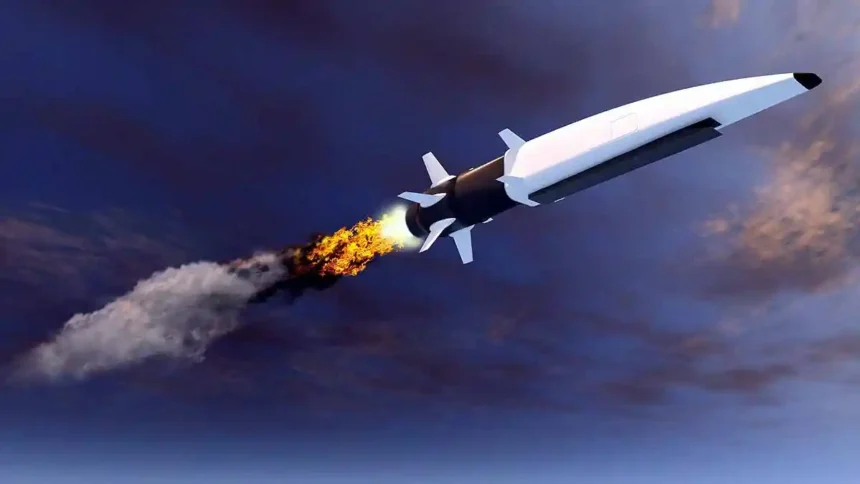India’s gearing up to test one of its coolest and deadliest weapons yet—the Extended Trajectory-Long Duration Hypersonic Cruise Missile (ET-LDHCM)—under the super-secret Project Vishnu. Run by the Defence Research and Development Organisation (DRDO), this missile’s got everyone talking, and it’s easy to see why. It’s a totally homegrown project, built with Indian tech and some help from local private companies, and it’s set to make India a big player in the global hypersonic missile club alongside the U.S., China, and Russia.
So, what’s the big deal? This missile’s crazy fast, hitting speeds of Mach 8—that’s about 11,000 km/h or 3 km every second! It can zip 1,500 km, far enough to reach deep into enemy territory, and carry a hefty warhead weighing 1,000 to 2,000 kg. Unlike old-school ballistic missiles that follow a predictable path, the ET-LDHCM flies low, twists and turns mid-flight, and is super hard to spot or shoot down. It’s powered by a slick scramjet engine, which uses air from the atmosphere to keep burning fuel, letting it stay hypersonic for longer. DRDO already nailed a 1,000-second ground test of this engine, showing India’s got the tech down pat.
The missile’s built tough, with heat-resistant materials that can handle 2,000°C and a special coating to protect it from saltwater and sunlight. Plus, it’s versatile—you can launch it from land, air, or sea, giving the Indian Army, Navy, and Air Force a ton of options to hit stuff like enemy bases or warships. Posts on X are hyped, with folks calling it a “strategic game-changer” that’ll keep rivals like Pakistan and China on their toes. Some even say it’s got them “shaking”.
Project Vishnu builds on earlier DRDO work, like the Hypersonic Technology Demonstrator Vehicle (HSTDV), which tested scramjet tech and hit Mach 6 for 20 seconds back in 2020. Now, they’re taking it to the next level with a real-deal missile, not just a demo. The project’s also boosting India’s tech scene, with small and medium businesses pitching in, creating jobs, and sparking innovation. Some experts even think the tech could help with stuff like cheap satellite launches or disaster response down the line.
But it’s not all smooth sailing. Testing’s just starting, and it’ll take a few more years and a bunch of trials to make sure the missile’s ready for action. Posts on X show some skeptics wondering if DRDO can deliver on time, given their mixed track record. There’s also chatter about the bigger picture—India’s racing to keep up with China’s hypersonic weapons, like their DF-17, and this test comes right after a new India-China border patrol deal, which has some folks questioning the timing. Pakistan’s not thrilled either, and the missile race in South Asia’s heating up.
For now, India’s pumped about Project Vishnu. The ET-LDHCM’s test is a huge step toward beefing up the country’s defenses and showing off its tech chops. If it works out, this missile could shift the power balance in the region, making India’s military a force to reckon with. Keep an eye out—DRDO’s planning to light up the skies soon, and the world’s watching.

